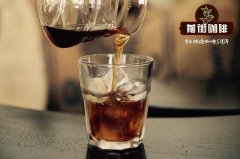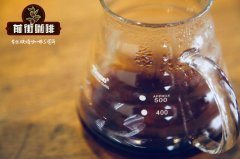What is the difference between raw bean treatment in the sun, washing, honey treatment and red wine treatment?
What is the difference between raw bean treatment in the sun, washing, honey treatment and red wine treatment?

It is said that the most common and effective way for coffee lovers to buy coffee beans is to look at the information on the packaging of coffee beans.
If the information about the variety, origin, manor, altitude, year, and treatment of coffee beans is available on the package, then there is evidence for the past life and this life of this bag of coffee beans.
However, the information on the coffee packaging may be too professional for coffee rookies. What is the flavor of coffee beans at different elevations? What do different ways of dealing with it mean?
Today, let's talk about the way coffee beans are handled.
As we all know, coffee is essentially a crop, and coffee trees will blossom and bear fruit.
The coffee flower is white and its aroma is a bit like jasmine. After the flower fails, it bears fruit. The fruit is blue at first, and then, according to the variety, it slowly changes to red or yellow after ripening.
These fruits are what we often call coffee cherries. The seeds in coffee cherries are coffee beans.
Coffee cherries are perishable and not easy to preserve, so they need to be treated immediately after picking to separate the coffee beans from the coffee cherries.
This process is the usual way of handling coffee beans.
There are three common ways to treat coffee beans: sun exposure, water washing and honey treatment.
The sun:
Sun drying is a traditional way to treat raw coffee and beans.
Its process is generally as follows: picking coffee cherries-exposure to the sun in the sun-using a sheller to remove the flesh-- selecting and grading the coffee beans.
After picking the coffee cherries, put them in batches in the sun field to roll and expose, wait for the sun and wind sand to bring the moisture in the coffee cherries, then use the machine to remove the dried skin and flesh, and take out the coffee beans.
If there is a sheller to help people peel off the peel and pulp of coffee beans, then the process of drying coffee beans can only be done manually.
Artificial means complex and changeable and difficult to quantify.
Therefore, the sun-treated coffee beans have a richer flavor and a more hierarchical taste, not only retaining the fruit flavor of coffee cherries, but also vaguely mixed with the taste of sunshine and sand, with lower acidity and more mellow.
Of course, if it is not handled properly, it is also easy to get poor quality coffee beans in the sun.
Therefore, if you want to buy sun-treated coffee beans, you need to buy high-quality products produced by a good manor with a good reputation.
Washing:
Washing is the most popular method for the treatment of boutique coffee beans. Compared with the sun, the water washing method is easier to control the various variables in the treatment process, and the treatment process is also more complex.
The process is generally as follows: picking coffee cherries-putting them in a cistern to filter out impurities and immature coffee cherries-using a machine to remove coffee cherry pulp-removing the mucous membrane attached to the endocarp in the fermentation tank-removing light, hard beans in a washing pool-drying in a tanning place (dryer)-removing endocarp by machine-selecting and grading coffee beans.
The coffee beans washed with water have relatively few impurities and defects, clear taste and bright acidity.
However, if not handled properly in the fermentation process, coffee beans are also easy to catch sour taste.
Honey treatment:
Honey treatment, also known as semi-washing, is widely used in Central and South America.
Honey treatment does not refer to the treatment of coffee beans with honey.
Because the sugar content of the inner epidermis of untreated coffee beans is extremely high, and it is relatively slippery, it is called "honey" in the industry. Honey treatment refers to the treatment of retaining some or all of the "honey".
Compared with the washing treatment, its treatment method saves the step of fermentation in the fermentation tank, so it retains the endocarp mucosa of coffee cherry to a certain extent, namely "honey".
Honey-treated coffee is rich in sweetness and balanced acidity, and rich in Cream, which restores the flavor of coffee beans and is very popular with coffee lovers.
The most famous of the coffee beans treated in this way is Costa Rica treated with honey.
In addition, there is a very special treatment: red wine treatment.
It was brought by Sasa, champion of the 2015 WBC (World barista Competition), to bring red wine to Colombian coffee beans into the eyes of coffee lovers.
This treatment is inspired by the fermentation process of red wine, which uses acetic acid or lactic acid for fermentation, which can control the degree of fermentation by PH value, so it is also called controllable fermentation.
The coffee beans treated in this way have a sweeter taste, elegant acidity and unique flavor.
At present, the most common coffee bean processing methods, such as sun Yega Chuefei, honey treated Costa Rica, red wine treated Colombia and other coffee beans are sold in Abica Coffee.
Important Notice :
前街咖啡 FrontStreet Coffee has moved to new addredd:
FrontStreet Coffee Address: 315,Donghua East Road,GuangZhou
Tel:020 38364473
- Prev

What is red coffee processing?
What is red coffee processing? In 2015, WBC contestant Sasa brought to the world a Colombia coffee bean treated in a process similar to red wine brewing. In addition to the novelty of the taste of the bean, the "red wine treatment method" adopted to treat the bean also made Xiao Bian and many coffee lovers curious. What exactly is the so-called "red wine treatment"?
- Next

Coffee treatment new treatment raisin treatment method "double fermented honey treatment" how to deal with?
New coffee treatment method raisin treatment method double fermented honey treatment is how to deal with? First of all, let's find out, how do you make raisins? Drying methods: 1, direct exposure of selenium in the sun to make brown raisins; 2, drying in the shade room; 3, rapid drying method, the grapes are first treated with dehydrating agent, and then dried in the shade room or dried in a dryer, which is greatly shortened
Related
- Detailed explanation of Jadeite planting Land in Panamanian Jadeite Manor introduction to the grading system of Jadeite competitive bidding, Red bid, Green bid and Rose Summer
- Story of Coffee planting in Brenka region of Costa Rica Stonehenge Manor anaerobic heavy honey treatment of flavor mouth
- What's on the barrel of Blue Mountain Coffee beans?
- Can American coffee also pull flowers? How to use hot American style to pull out a good-looking pattern?
- Can you make a cold extract with coffee beans? What is the right proportion for cold-extracted coffee formula?
- Indonesian PWN Gold Mandrine Coffee Origin Features Flavor How to Chong? Mandolin coffee is American.
- A brief introduction to the flavor characteristics of Brazilian yellow bourbon coffee beans
- What is the effect of different water quality on the flavor of cold-extracted coffee? What kind of water is best for brewing coffee?
- Why do you think of Rose Summer whenever you mention Panamanian coffee?
- Introduction to the characteristics of authentic blue mountain coffee bean producing areas? What is the CIB Coffee Authority in Jamaica?

